
What is Powdery Mildew?
Powdery mildew is a common name for several types of fungal infections that frequently occur on cucurbits, nightshades, and legumes. It is typical for powdery mildew to appear during hot, dry weather. Powdery mildew first presents as white patches of furry mold, usually on the tops of leaves. It spreads via spores in the air. These spores can also live in previously infected soil or structures, making the removal of contaminated parts essential to long-term garden health.
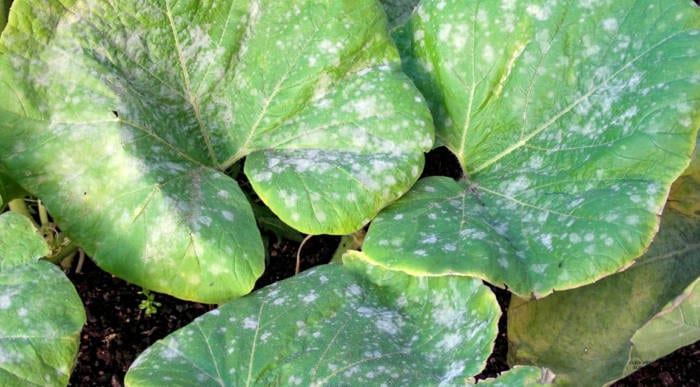
Plants grown in greenhouses are more susceptible to powdery mildew and a range of other fungal infections due to a variety of factors. You are most likely going to find powdery mildew on melons, squash, and cucumbers. I would like to explain and share several methods to prevent it so you can enjoy your greenhouse garden year-round.
How do powdery mildew infections happen, and what are the solutions?
Ventilation
Proper ventilation is essential for plant health in general but most important for preventing fungal infections of all kinds including blight, leaf curl, and rust. Moving fresh air in your Dome is vital, especially in the summer months when plants are growing fast.
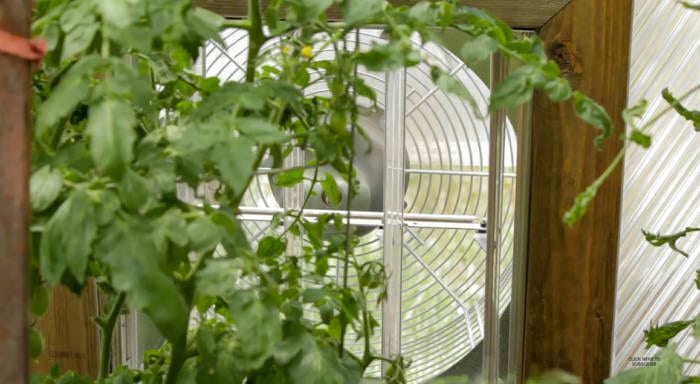
Solution: To ensure you are getting the best ventilation in your Growing Dome Greenhouse, be sure your vents and fans are working correctly before fruiting plants flower. During the flowering stage, your plants are extremely susceptible to infections like powdery mildew because the flowering and fruiting phase requires a lot of energy, putting a lot of stress on your precious plants.
Watering

Inapt watering can affect your soil’s life and nutrient balance negatively, therefore weakening your plants and making them susceptible to all kinds of pests and diseases. Too little water kills probiotics and good fungus in the soil while also stressing plants. Too much water flushes nutrients out (especially nitrogen) and can be even more dangerous in clay, poorly draining soil.

Solution: Although timed drip irrigation is convenient, don’t solely rely on it. It is important to check your soil regularly by hand. To do this, push your finger a half-inch to an inch into the soil and pull back. Do you see a color difference? How does the texture and moisture level feel? This is how you will know what and how much your soil needs by continually doing this before and after water and developing a relationship with your soil.
Root Health

I like to consider roots the central immune system for a plant. If they are strong, then they uptake nutrients optimally, helping the plant develop a strong cellular structure resistant to infections of most kinds. It also produces more phytochemicals that ward off pests and predators.
Solution: Healthy compost and supplementing with probiotics and mycorrhiza.
Plant Spacing and Trimming
Again, if the airflow is compromised the plants are stressed by extreme temperature fluctuation. A combination of wet leaves that don’t dry and weak plants equals a perfect environment for fungus to thrive.
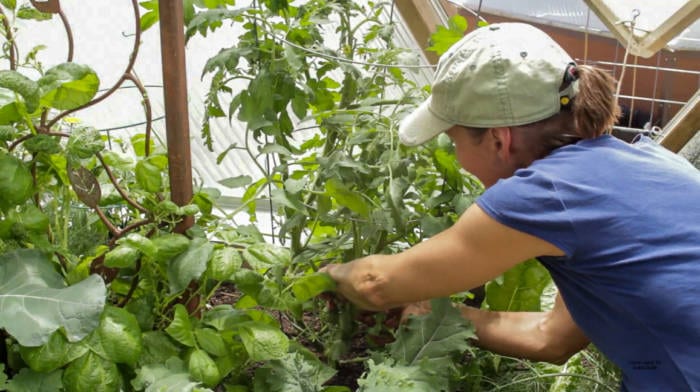
Solution: Thin plants and prune up large plants like tomatoes, squashes, cucumbers, etc. so that air flows under and through them. This also allows you to water your soil without soaking plants and risking those damp leaves in dark places just asking for infections.
Light
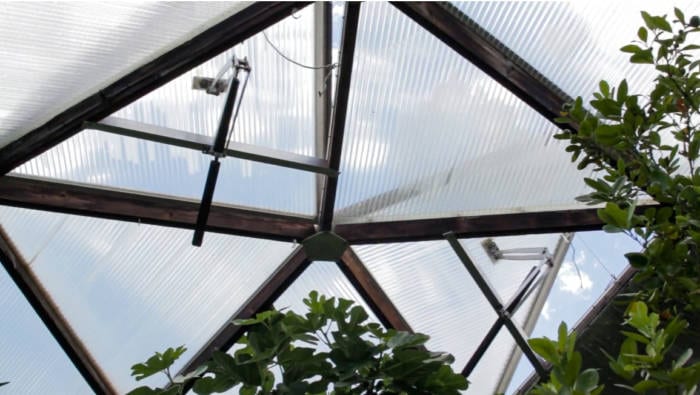
Nothing kills fungus like UV light. Did you notice how every plant on the most susceptible list is a summer, light loving crop? They need light. And when they don’t get enough, fungal infections happen. Many greenhouses block UV and visible light to different extents. The high-quality polycarbonate panels on Growing Domes block most UV and 20 – 35% visible light in order to give you a reliable structure that can withstand extreme weather and harsh sun. This UV block will make your kale, chard, and lettuce almost sing with joy all summer long. But your hot crops need a little extra planning.
Solution: Plant hot crops susceptible to powdery mildew and other fungal infection in full sun spots (usually along southern beds). Put your squashes and most prone in front of vents for good airflow as well. If growing a lot of these types of plants, don’t use shade cloth but instead rely on good ventilation.
Other Preventatives

– Fungus can’t thrive in an alkaline environment, so many people find baking soda spray helpful during the fruiting and flowering phase.
– Organic milk spray is my go-to remedy. I use 50/50 milk and water even for mild infections, and it works like a charm, as long as I catch it early. If I see the first patches of white fuzz, I spray milk early the next morning after removing infected leaves. Then I wait two days and spray again. I might spray weekly as a preventative, sometimes alternating silica and milk.
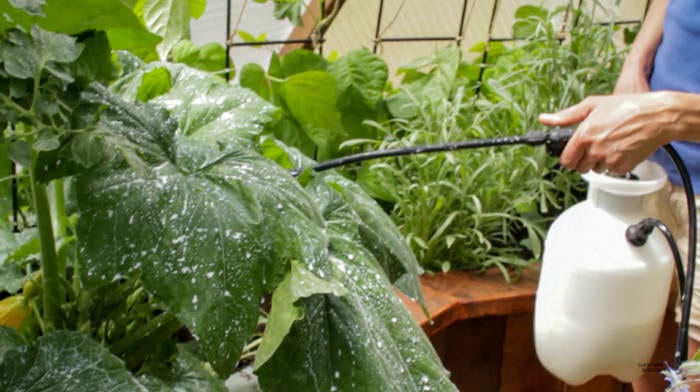
– Silica foliar spray can be liquid or dissolved powder or, my favorite, horsetail tea. This works best sprayed before flowering as a preventative.
As you can see, I’m a big fan of foliar spray and recommend a good sprayer for anyone growing dense summer crops inside.
– Buy powdery mildew resistant hybrids. It’s not GMO. It’s just the product of people crossing strains and saving seeds from plants that exhibited resistance. They are not heirloom, so seed won’t likely make the same plant, but they are natural and, I think, worth the little extra money. Don’t expect resistant plants to be fully resistant. They still benefit from special care and can still get powdery mildew. Just a bit tougher than others.
What should you do if you already have powdery mildew?
If every leaf on a plant is covered, carefully remove the whole plant, trying not to shake spores all over everything else, therefore, infecting neighboring plants. Many people use plastic bags. If only a few leaves are infected, remove them in the same fashion and place them in a bucket or outside, but not recommended for compost piles. Then treat the remaining plant with milk spray or fungicide of your choice.
Fungicides
Sulfur and Copper fungicides are commonly used, especially on perennials like trees. They are both OMRI (Organic Materials Review Institute) listed as safe for periodic use. Still, they are only recommended for serious cases like rust or blight, etc. (not usually powdery mildew). Biofungicides can also be good options, especially for plants growing in previously infected structures. Your local hydroponic store will likely have several options like Regalia with Knotweed extract and others.
I prefer to use only food-grade products like milk and silica and focus on prevention. I also use natural selection by planting more than I need and thinning out the weaker plants in the bunch. This helps me save only the best seed from our heirloom varieties.
We are always here to help you achieve the Most Beautiful Thriving Garden. Wishing you the greatest success.
Join the Inner Circle
An exclusive place for year-round gardeners. Join us to receive our monthly newsletter, “The Happy Grower”. In our newsletter we provide community stories, event updates, expert gardening tips, and exclusive offers.
